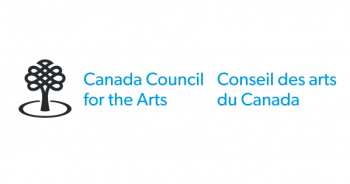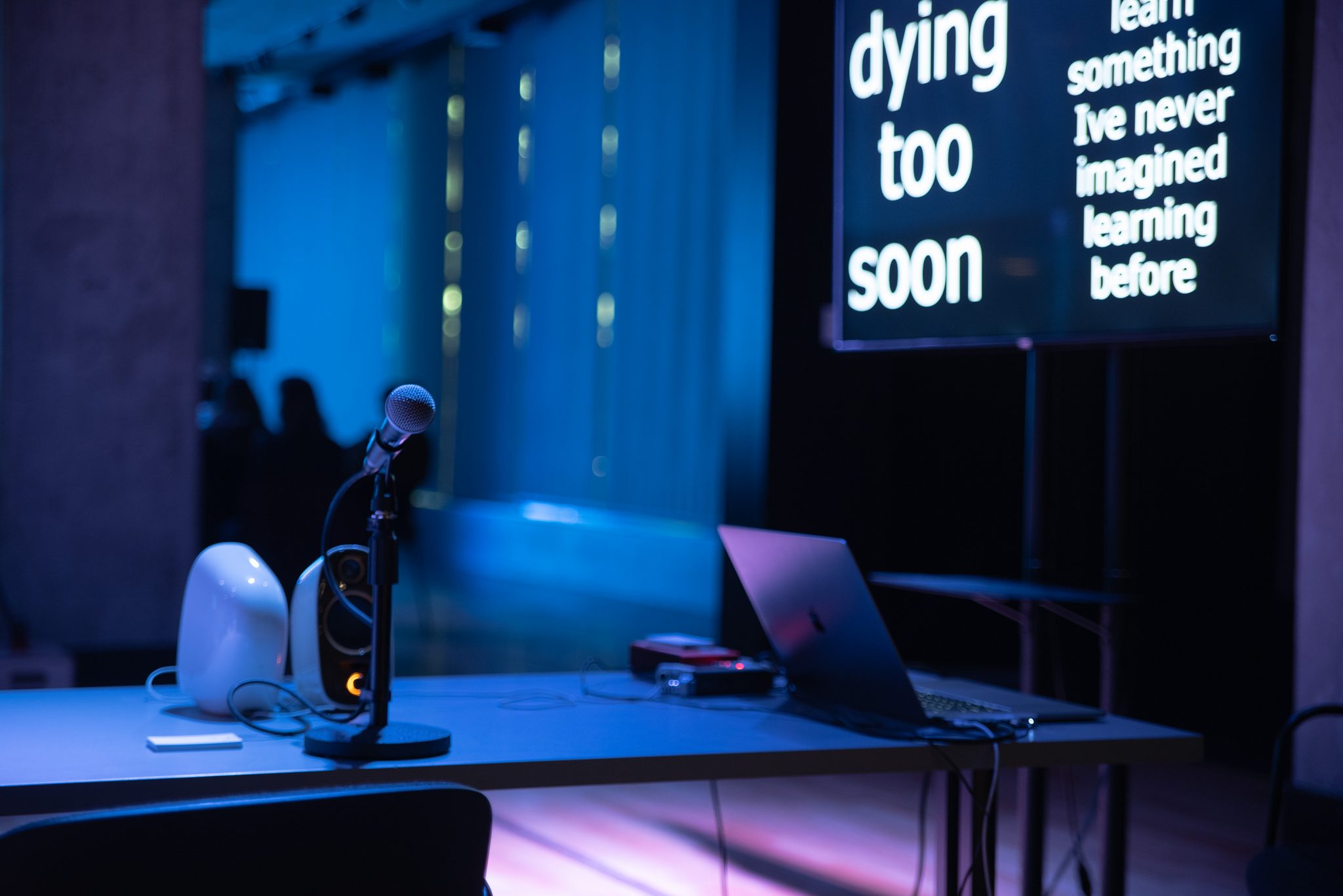AI Ritual
Overview
AI Ritual is an immersive performance work driven by a large language model (LLM) that was trained by UKAI. A co-production with STO Union, the work was initially presented at the Spy on Me festival at Hebbel am ufer (HAU1) in Berlin in September 2022 and at Out Loud! in Wakefield, PQ in November 2022.
AI Ritual is available for touring or installation. Contact us for more information.
This project allows the audience to share their hopes and fears with a computer that listens. The audience’s varied responses provide a basis for the AI to articulate its own hopes and fears before being erased so that the cycle of being born, learning, speaking, and dying can begin again. Audiences become part of a performance that constitutes and makes visible how human choices are tangled up in the technological systems that organize our social and economic lives.
The development of artificial intelligence has been driven by the interests of large commercial or government institutions. AI will increasingly sort the world around us, prioritize elements for our attention, and make decisions about what comes next. Unsurprisingly, the assumptions embedded in these powerful tools echo those of their creators.
In response, UKAI is pursuing a polyphony of AI voices in dialogue with one another and representing a wildly diverse range of assumptions, worldviews, and experiences. Rather than the single-minded and narrow pursuit of efficiency and groawth, we hope to see a diversity of values and cosmologies centered in the development of cognitive technologies.
AI relies on an abstraction from the lived experiences of the world. Algorithmic systems lack a body to look out from, a natural environment to shape its experiences, and has no stories of migration or culture to constitute a thread over time. As we turn over more and more decisions to these systems, we must acknowledge their enormous potential, but also the gaps in understanding that limit their effectiveness in making decisions about human lives.
While much of this work is developed in service to UKAI’s internal research and prototyping we also benefit from partnerships with other cultural and non-cultural partners exploring related themes. This includes STO Union in Quebec, the Hebbel in Berlin, and others.
AI Ritual, a co-production with STO Union and HAU Hebbel am Ufer
In collaboration with the performance company STO Union, UKAI developed a live and performance-centered AI Ritual as a response to uncertainty about engaging with live performance in a post-COVID world. Over 90 minutes, audience members are invited to share their hopes and fears with a computer which then projects those feelings onto giant screens for all to see. The responses also served as prompts for a language model which generates its own hopes and fears, spoken out loud into the theatre, before being deleted so that the cycle can begin again.
During testing, we told the AI of our plans to let it die, which generated hopes that involved bloody hands and dead enemies. Things softened eventually. On the last day in Berlin, the AI mourned a dying planet and invited us to cry, if we cared to.
The back end of this work is a language model trained on the offered feelings and responses of audience members. The AI can only draw on those in the room with it. We were looking for new engagement models for audiences to experience theatre. The solution is an interactive performance that engages audiences with accessible modes of artificial intelligence (AI) and an enactment of ritual in the face of lost communities.
From ‘home offices’ to ‘online theatre’, human experience is undergoing a dizzying revolution filled with contradictions, and the Real World is struggling to adapt. The multidisciplinary company STO Union (Canada) enters the historic HAU1 venue, built in 1908, and asks a simple question: how can pre-internet theatre architecture be of use now, to a divided public that is traumatized by world-wide tragedy? With video installation, live art, music, performance, public engagement, and an artificial intelligent ritual (with UKAI Projects), “HAU: OUT LOUD” brings the public together in a shared exploration of the venue’s function in a challenging world. Where multiple narratives exist at the same time, and no one way forward presents itself, in this production, you are free to roam the building and choose your way.
This project responded to the period of grief following the peak of COVID-19 spread and lock-down. Expectations around theatre and audiences are changing. STO Union’s performance Out Loud blended video installations, live art, music, performance, public engagement, and UKAI’s AI Ritual to draw in a public to re-imagine our interactions with the world, and to wonder at the role of the theatre (as a space and a discipline) in a profoundly altered society. By allowing multiple narratives to co-exist, the project asks the individual to place themselves in a suddenly open and interdisciplinary space.
In Berlin, the AI Ritual happened onstage. Behind it, seven videos were projected on a range of screens. Audiences were encouraged to come on stage and watch the videos in the middle of a semicircle scrim. For the ritual itself, two ‘technicians’ sat at a long table covered with wires and laptops. An empty seat beckons. Should the audience member engage in the ritual, a disembodied voice asks them what they hope for. They answer into a microphone and the computer confirms that it has heard the response correctly. The computer then asks what they fear and the process repeats. Finally, the audience member can offer something off the top of their head. Both the hope and fear are added to a cycling projection of collective responses.
The collective responses serve as a prompt architecture for the computer’s own model. Prior to the data being deleted, the AI generates its own hope and its own fear based on what it has learned and the response is shared with the full theatre through the house speakers.
The piece developed by UKAI ran both prior to and following a live performance. AI became a way to engage audiences digitally and a way to prolong or extend performance outside of the traditional performance medium.
AI is too often inaccessible to the public, and AI Ritual offers entry points to understanding this technology through both the work itself and the technicians that gently guide the process.
This project is generously supported by




